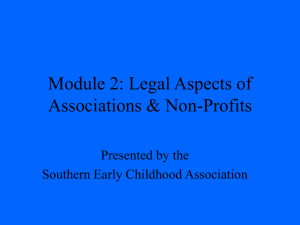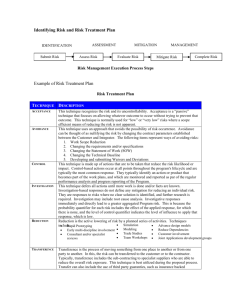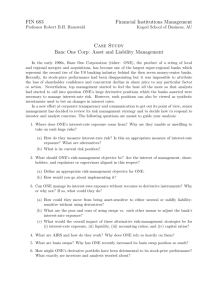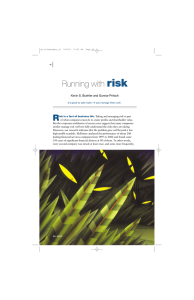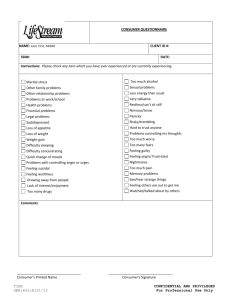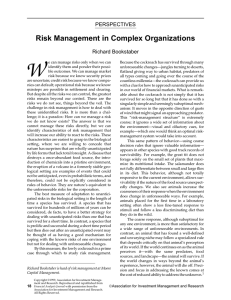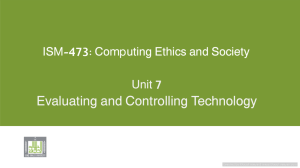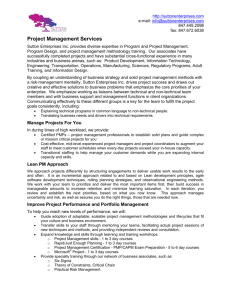5.08a Explain the nature of Risk Management
advertisement
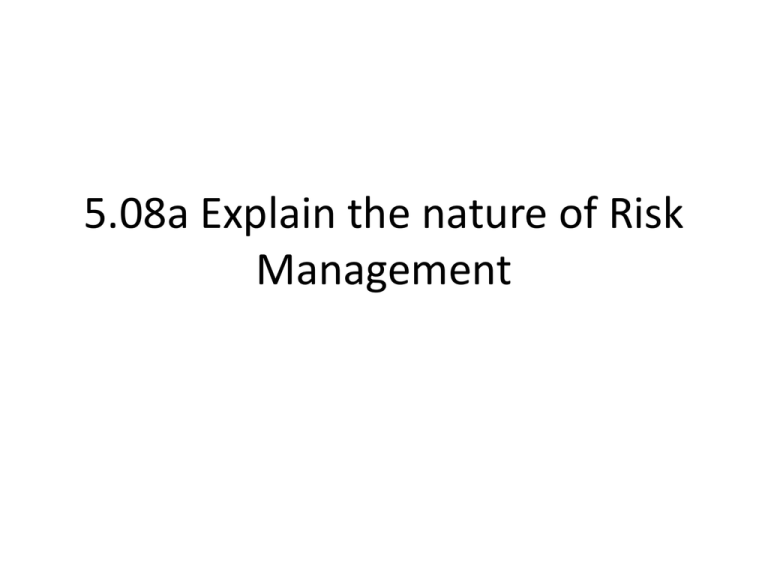
5.08a Explain the nature of Risk Management Learning the Basics about Risk Risk is the possibility of loss (failure) or gain (success) inherent in conducting business. • All business risks are either pure or speculative. – Pure risks bring the possibility of loss or no loss, but no gain. • Example: Tornado – Speculative risks bring the possibility of loss, no change, or gain. • Example: Investing in stocks • Risk Nanagement involves: • Planning, controlling, preventing, and limiting business losses • Enhancing possibilities for gain • Taking calculated risks that have the lowest possibility of loss and the highest possibility of gain • Being proactive, not reactive, in facing risk • Controlling costs • Protecting the business’s assets Categories of Risk • Hazard risks - Are potential events or situations that can cause injury or harm to people, property, or the environment – Include tornados, earthquakes, floods, hurricanes, and other natural phenomena; fires and other property damage; crime; product recalls; liability claims; illness, injury, disability, harassment, discrimination; etc. • Financial risks - Are possible events or situations that directly impact a company’s cash flow. – May prevent a company from having sufficient funds to meet its financial obligations – Can sometimes be used to a company’s advantage – Include inflation, interest rate increases, credit downgrades, inaccurate financial data, improper budgeting practices, inadequate accounting processes, investment risk, foreign exchange rate fluctuations, etc. Categories of Risk • Operational risks - Are the result of employee actions, core processes, and daily business activities – May involve disagreements and/or problems with human resources, labor relations, suppliers, channel members, and company management – Can also include poor product development, unreliable manufacturing equipment, product shortages, insufficient information • Strategic risks - Are the most consequential of the four categories of risk – Typically have significant impact on the firm – Have the potential to affect the execution of an organization’s long-term plans – Can involve damage to the company’s reputation as a result of brand erosion, fraud, negative publicity, etc. – Also can include threats posed by new competitors and/or new competing products; technological innovations that make certain products obsolete; regulatory and political issues; changing customer wants; etc. Complaints About Risk Management • Complaints about risk management include: • It can be difficult to determine who within a company is responsible for risk-management efforts, and as a result, many risks are overlooked. • Because risk is constantly in flux, any risk management plan that a business might create is potentially out-ofdate as soon as it is developed. • Risk management seems to focus on what could go wrong in every situation, rather than concentrating on how to make things go right. • Risk management costs money that might be better spent elsewhere on more profitable activities. Risk-Management Processes • Because every business faces unique risks, risk management activities conducted at different firms are never exactly the same. • However, most risk managers and their staffs agree that there are four basic risk-management processes that every business should implement: – – – – risk identification risk measurement risk response and risk monitoring and control. Risk Identification • Is the first general risk-management process that businesses commonly implement • Involves identifying and listing every risk that could impact business objectives and activities Risk identification processes focus on two types of risks • Retrospective risks: – – – – Have occurred in the past Are fairly easy to identify Are more common than prospective risks May be identified by reviewing business incident logs, audit reports, customer complaints, staff surveys, professional journals, etc. • Prospective risks: – – – – Have not happened before Are a bit more difficult for businesses to identify Include potential problems and issues May be identified by conducting staff brainstorming sessions, an environmental scan, or interviews with customers and employees Risk Management • When identifying risks, risk management focuses on the causes, sources, or triggers of different risks, rather than on the impact that each risk might have on a business. • Potential risks are recorded in an established risk register. To make risk identification easier, risk management may also use a previouslydeveloped risk checklist that contains common, standard risks that the business faces on a regular basis. Measuring Risk Risk has two dimensions: impact and probability. • Probability – Is the likelihood that an event will occur – Is always somewhere between zero and 100%. • Impact – Is the effect or influence of an event – Can vary in terms of time, cost, and effects on health, human life, etc. It is the combination of impact and probability that creates a risk’s severity. Measuring Risk • Techniques used to measure and prioritize risks: • A risk impact/probability chart can be used to rate potential risks. – The probability that a risk will occur is represented on one axis of the chart, and the potential impact of the risk is represented on the other. – Based on research and past experience, risk management determines the potential impact and probability of each risk. – The different risks are plotted on the chart accordingly. – After the chart is complete, the low-level risks, mediumlevel risks, and critical risks (which should take priority in the risk response process) can be quickly determined. Measuring Risk • Risks can also be quantified (scored) based on their impact and probability. – A risk’s probability is determined on a scale of one to five. (A score of one means that the risk is unlikely to occur; five means that the risk is very likely to take place.) – The same is done for the risk’s impact. (An event with a score of one would have very little impact; five means that the event could paralyze the business.) – The probability score is multiplied by the impact score to determine the level or severity of risk. – If a risk’s overall score is low, little attention will be devoted to it, but if the overall score is high, the risk would become a top priority. Responding to Risk • After determining the size of each risk, the most effective course of action to take for each risk is selected. Common risk responses include: • Avoidance – By avoiding a risk, a business reduces the likelihood that the risk will occur. – The business chooses not to do something that is considered risky. – For example, by implementing safety training, a business can avoid the risk of employee injury. – Avoiding risk certainly can prevent losses, but doing so can also sometimes mean losing out on a potential gain. • Transference – Transference involves moving the impact of a risk to someone or something else and is often used when the impact is measurable in dollars and cents. – Common transference devices include insurance, contracts, warranties, and guarantees. – A clear disadvantage to transference: You are still ultimately responsible for the outcome. Responding to Risk • Mitigation – If a risk is simply too difficult and expensive for a business to eliminate completely, risk management is likely to recommend that the firm mitigate the risks. – Mitigating a risk means reducing or controlling its impact if it occurs. – For example, any business that installs fire sprinklers, fire extinguishers, and smoke alarms mitigates or reduces the damage that a fire could cause to its facilities. • Acceptance – Acceptance is also known as the retention or assumption of risks. – It involves accepting a risk’s consequences because the potential payoff is higher than the losses. – A business that accepts a risk might consider it a cost of doing business. – Although risks that are accepted are usually rare and/or have little impact, businesses need to develop contingency and fallback plans in the event that these risks do occur. Monitoring and Controlling Risk The last of the four basic risk-management processes is the risk control process, which involves: – Determining the effectiveness of current risk-response strategies and tools – Tracking risks to determine if they are growing, in decline, or unchanged – Developing responses and workarounds for previously unidentified risks. – Monitoring new and existing risks is especially important because as a business learns more about a particular situation, its view of a risk may change. • This might mean that more (or less) attention needs to be paid to the risk. • Also, when a business’s risk-tolerance level changes, risk management must determine if a risk that was once important continues to be significant.
